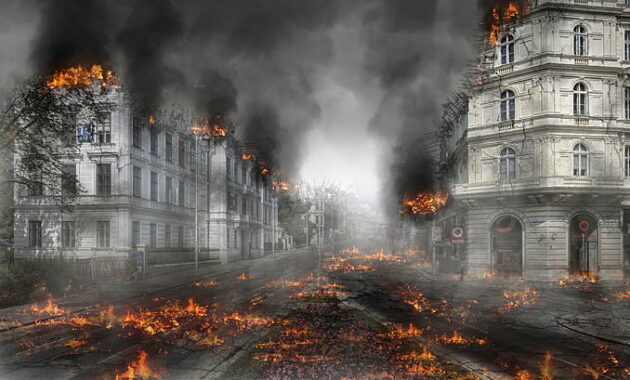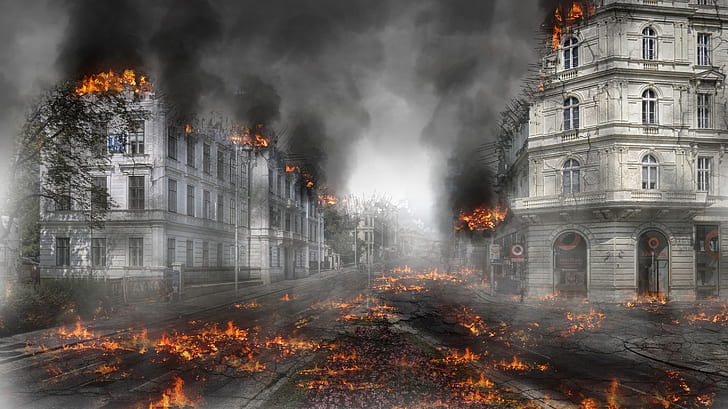Fire Resistant Home Design – In today’s world, the threat of wildfires and structural fires is an ever-growing concern.
With climate change causing more extreme weather conditions, homeowners must consider fire safety when designing or renovating their properties.
This article explores various fire-resistant home design ideas to help protect your home from fire hazards while ensuring comfort and aesthetic appeal.
Understanding Fire-Resistant Materials
1. Non-Combustible Building Materials
One of the primary strategies in fire-resistant home design is selecting non-combustible materials. These materials do not ignite or contribute to the spread of flames. Here are some options to consider:
- Steel and Concrete: Both materials are incredibly durable and fire-resistant. Steel framing and concrete walls can significantly enhance the structural integrity of your home, preventing fire damage.
- Fiber-Cement Siding: This material is made from a mixture of sand, cement, and cellulose fibers. It mimics wood but offers superior fire resistance, making it an excellent choice for exterior siding.
- Brick and Stone: Traditional building materials like brick and stone offer natural fire resistance. They can withstand high temperatures and do not ignite, making them ideal for exterior walls.
2. Fire-Resistant Roofing
Your roof plays a critical role in protecting your home from fire. Opt for roofing materials that are rated for fire resistance, such as:
- Metal Roofing: Metal roofs can resist high temperatures and flames, providing excellent fire protection. They also reflect heat, which can help reduce cooling costs.
- Clay and Concrete Tiles: These materials are inherently fire-resistant and can withstand extreme temperatures without combusting.
- Asphalt Shingles: While not as fire-resistant as metal or tile, some asphalt shingles are treated to enhance their fire resistance. Look for shingles with a Class A rating for maximum protection.
Read also:
1. Earthquake-Resistant House Design: A Comprehensive Guide to Building Safe and Sustainable Homes
2. Building a Hurricane-Resistant Home: Key Features and Considerations
3. Best Safe Areas to Buy Property in the U.S. During Hurricane Season: A Comprehensive Guide
Landscape Design for Fire Safety
3. Creating Defensible Space
Defensible space refers to the buffer zone between your home and the surrounding vegetation. Proper landscape design can reduce the risk of fire spreading to your property. Here are some tips:
- Clear Flammable Vegetation: Remove dead plants, leaves, and other combustible materials within 30 feet of your home. Trim trees and shrubs to create separation and reduce fire fuel.
- Use Fire-Resistant Plants: When landscaping, choose plants that are less likely to ignite. Fire-resistant species include succulents, native grasses, and certain types of flowers that retain moisture.
- Mulch Wisely: If you use mulch, opt for fire-resistant materials such as gravel or stone instead of wood chips, which can easily ignite.
4. Install Hardscaping Features
Incorporating hardscaping elements can further enhance your home’s fire safety. Consider the following:
- Patios and Walkways: Use stone, concrete, or pavers to create non-combustible surfaces that prevent fire from spreading to your home.
- Firebreaks: Create barriers using gravel or rock to slow or stop the progress of fire. These can be particularly effective in high-risk areas.
Home Design Strategies
5. Designing for Fire Safety
When planning your home’s layout, consider design elements that enhance fire safety:
- Limit Open Floor Plans: While open floor plans are popular, they can allow fire to spread quickly. Consider incorporating walls or partitions to slow down the spread of flames and smoke.
- Fire-Resistant Windows: Install tempered or double-glazed windows that can withstand high temperatures and prevent flames from entering your home.
- Install Sprinkler Systems: Residential fire sprinkler systems can significantly reduce the risk of fire damage. They activate automatically when heat is detected, providing immediate suppression.
6. Use of Fire-Resistant Furnishings
While building materials are crucial, the furnishings inside your home also play a role in fire safety:
- Choose Fire-Retardant Fabrics: Opt for furniture and upholstery made from fire-retardant materials. Look for items that meet safety standards for flame resistance.
- Limit Combustibles: Keep flammable items such as blankets, paper, and decor away from heat sources to reduce the risk of ignition.
Conclusion
Incorporating fire-resistant design elements into your home can significantly enhance its safety against potential fire hazards.
From selecting non-combustible materials to creating defensible spaces and utilizing fire-resistant landscaping, every decision counts in protecting your home. By prioritizing fire safety in your design choices, you not only safeguard your property but also provide peace of mind for you and your family.
Investing in these ideas today will ensure that your home remains a safe haven for years to come.
Additional Resources
For more information on fire safety and prevention, consider visiting:
- National Fire Protection Association (NFPA): www.nfpa.org
- Federal Emergency Management Agency (FEMA): www.fema.gov
By implementing these fire-resistant home design ideas, you can make informed choices that protect your home from fire hazards while ensuring comfort and beauty.
Fire Resistant Home Design: Alabama, Alaska, Arizona, Arkansas, California, Colorado, Connecticut, Delaware, Florida, Georgia, Hawaii, Idaho, Illinois, Indiana, Iowa, Kansas, Kentucky, Louisiana, Maine, Maryland, Massachusetts, Michigan, Minnesota, Mississippi, Missouri, Montana, Nebraska, Nevada, New Hampshire, New Jersey, New Mexico, New York, North Carolina, North Dakota, Ohio, Oklahoma, Oregon, Pennsylvania, Rhode Island, South Carolina, South Dakota, Tennessee, Texas, Utah, Vermont, Virginia, Washington, West Virginia, Wisconsin, Wyoming.
Buenos Aires, Argentina; São Paulo, Brazil; Rio de Janeiro, Brazil; Bogotá, Colombia; Lima, Peru; Santiago, Chile; Caracas, Venezuela; Montevideo, Uruguay; Quito, Ecuador; Asunción, Paraguay; La Paz, Bolivia; Sucre, Bolivia; Medellín, Colombia; Cali, Colombia; Guayaquil, Ecuador; Valparaíso, Chile; Rosario, Argentina; Córdoba, Argentina; Maracaibo, Venezuela; Barranquilla, Colombia; Manaus, Brazil.
Africa:
Cairo, Lagos, Nairobi, Dakar, Johannesburg, Casablanca, Addis Ababa, Accra, Tunis, Lusaka, Harare, Kampala, Algiers, Khartoum, Mogadishu, Freetown, Windhoek, Kigali, Bamako, Dar es Salaam.
Australia:
Sydney, Melbourne, Brisbane, Perth, Adelaide, Hobart, Darwin, Canberra, Gold Coast, Cairns, Newcastle, Wollongong, Geelong, Townsville, Launceston, Toowoomba, Ballarat, Bendigo, Albury, Rockhampton.
Europe:
London, Paris, Rome, Berlin, Madrid, Vienna, Amsterdam, Lisbon, Prague, Athens, Brussels, Copenhagen, Oslo, Dublin, Warsaw, Helsinki, Stockholm, Budapest, Edinburgh, Zurich, Munich.






